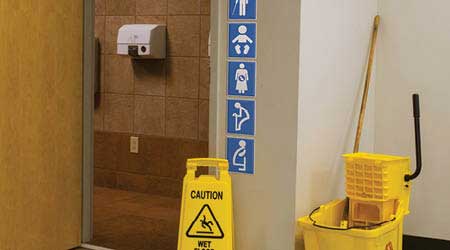
The Americans with Disabilities Act (ADA) is a federal civil rights law and its regulations have been in effect since January 26, 1992. Yes, it has been 24 years. At that time, all existing buildings were required to begin the barrier removal process, meaning the removal of architectural and communications barriers that are structural in public areas.
However, the regulations did not define exactly how much effort and expense were required for a facility to meet its obligation. It was ruled that this judgment must be made on a case-by-case basis, taking into consideration such factors as the size, type, and overall financial resources of the facility, and the nature and cost of the access improvements needed.
Because of these leniencies, many facilities took their time complying and are still tasked with removing all barriers. Others have been misinformed about whether their older facility is required to observe the regulation.
A leading myth about the ADA is that buildings that were built before 1990 are actually “grandfathered” in. This could not be more false.
All buildings are covered under the ADA, with the exception of federal facilities, private clubs and facilities owned by religious organizations. Covered entities include schools, universities, hospitals, commercial office buildings, retail, recreation facilities, transportation facilities and hospitality (restaurants and hotels).
ADA regulations prioritize four areas within these facilities: entrances, goods and services (facility layout), additional access (drinking fountains and public phones), and usability of restrooms. According to the regulation, restrooms must be accessible to people with disabilities.
ADA Requirements In The Restroom

 The Down and Dirty on Cleaning in Virus Season
The Down and Dirty on Cleaning in Virus Season How Surfactant Use is Expanding in Commercial Cleaning
How Surfactant Use is Expanding in Commercial Cleaning Clean Buildings Conference
Clean Buildings Conference
